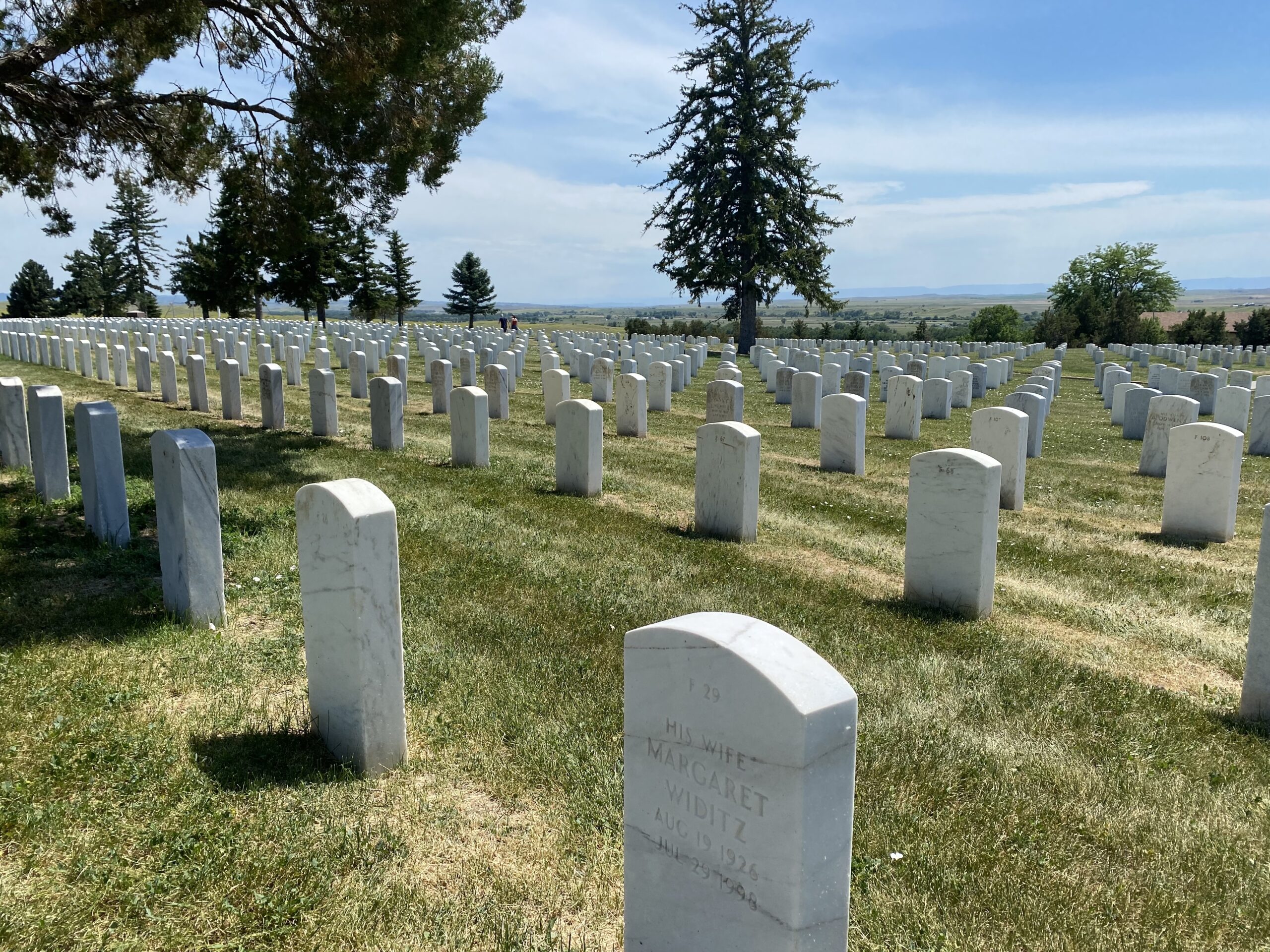Those who remember their grade school history will recognize Little Bighorn as the site of General Custer’s heroic last stand. The truth is it’s the place where a bunch of Indians kicked his butt.
Halfway between Bozeman and North Dakota, the Little Bighorn Battlefield National Monument in southeastern Montana is a prime example of how victors write the history. Sure, the combined forces of the Lakota, Sioux, Northern Cheyenne, and Arapaho won the battle, but they ultimately lost the war to the U.S. military. As a results, millions of school children learned about Custer’s last stand, but few could name the Indian leaders that carried the day or even the tribes to which they belonged.

We happened to visit on the 148th anniversary of the battle on June 26. Unfortunately, the visitor center was in the process of being relocated so we were unable to see any of the interpretive exhibits to give context to the battlefield.
But as is our habit, we had listened to a couple of history podcasts on the drive over, and had a pretty good sense of what had happened. Custer and his cavalry were pursuing the Indians, trying to force them back onto a reservation. The soldiers had come to within 15 miles of where the Indians had set up their village along the Little Bighorn village. From a highpoint known as Crow’s Nest, scouts working for Custer saw the Indian encampment.

Custer was convinced that the Indians knew he was there and decided to attack instead of waiting for a slower moving wagon train of soldiers and supplies. He feared the the Indians would scatter if he waited.
He split his troops and had one set attack the village from the flank. But the Indians, under the command of Crazy Horse and others, quickly repelled the initial attack and drove the soldiers back up the hill. As they chased the army across the Little Bighorn and up the hills, the Indians saw Custer and his troops off to the right.
They quickly veered to attack Custer’s men, eventually encircling them on a mound. It was there Custer would make his famous last stand. The cavalry men shot their horses to provide a barricade to protect themselves, and tried to fend off the attack.
Just beyond the visitor’s center, the site of Custer’s last stand is a grouping of nearly two dozen white tombstones, marking where Custer and his men died. The white tombstones dot the entire battlefield, interspersed with fewer red granite tombstone showing where Indians died.
Soon after the battle, the U.S. put up a memorial to Custer and his men, and created a National Military Cemetery, similar to the one in Arlington. Men who served in any war were eligible to be buried their until the cemetery was full. Tombstones show soldiers who had served from the Civil War through to the Viet Nam war buried there.
Custer was eventually disinterred and his remains transferred to West Point Military Academy.

It wasn’t until the 1990s that the Native Americans who died there were honored with their own memorial, within a stone’s throw from the Last Stand memorial. A contest was held to design the memorial. The winning entry was a line-drawing sculpture of three Indians riding their horses through the plains. Stonework around the sculpture recognizes the tribes who fought in the battle and some of the warriors who lost their lives.
The site has a scenic drive with interpretive signs that strive to show you what happened in those various locations. Unfortunately, it’s hard to pick up the order in which those events happened, as you drive along the various stops. Perhaps the visitor center displays would have connected the dots.
Days: 153
Miles Traveled: 20,975
Next stop: Theodore Roosevelt National Park


